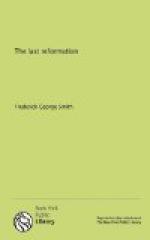The battle between Michael and the dragon signifies the great conflict which took place between primitive Christianity and the powers of paganism enthroned in the Roman Empire. It will be observed that this scripture has no reference to the origin of Satan himself, as some people have supposed; for the conflict was fought in the Christian dispensation, as is proved by the weapons which the followers of Michael employed—“And they overcame him by the blood of the Lamb, and by the word of their testimony; and they loved not their lives unto the death.” Under this figure, the followers of Michael are represented as victors, the dragon being cast down to the earth, or overthrown. It is a fact of history that primitive Christianity succeeded in its fight against paganism.
In the nineteenth chapter of Acts we have an account of the effect Christianity had on heathenism. Paul went to Ephesus, which at that time was the chief capital of proconsular Asia, a leading mart of heathen idolatry, and in which was situated one of the seven wonders of the ancient world—the temple of Diana. The preaching of the gospel produced such a mighty effect that the followers of Diana, fearing lest their magnificent system of worship should be destroyed, stirred up the people in a tumult until the city was in an uproar, a great mob shouting, “Great is Diana of the Ephesians.”
Before the end of the first century, according to the testimony of the younger Pliny, the temples of the gods of Asia Minor were almost forsaken. Well has Butler said, “The final victory of Christianity over heathenism and Judaism, and the mightiest empire of the ancient world, a victory gained without physical force, by the moral power of faith and perseverance, of faith and love, is one of the strongest evidences of the divinity and indestructible life of our holy religion.”
It is a fact worthy of mention that the early Christians regarded the Roman Empire as a great enemy to the truth, and described it as a dragon, the victory of Christianity over heathenism being represented by the overthrow of the dragon. Constantine and others of his time describe these events thus. Says Bishop Newton, “Moreover, a picture of Constantine was set up over the palace gate, with a cross over his head, and under his feet the great enemy of mankind (who persecuted the church by means of impious tyrants), in the form of a dragon, transfixed with a dart through the midst of its body, and falling headlong into the depth of the sea.”
Verse 11 seems to indicate that many of the followers of Christ lost their lives in this conflict, and this doubtless is parallel with the statement that the man child was caught up to God and to his throne. It may also imply that in the conflict the dragon employed the arm of civil power in his opposition to the truth. But Christianity increased notwithstanding the violent opposition. During the reign of the Emperor Septimus Severus, about the close of the second century, when a violent persecution of the Christians occurred, Tertullian, the first of the great Latin Fathers, wrote a notable apology for the Christian faith, addressed to the Emperor. In this important document this noble defender of Christianity sets forth so clearly the nature of the conflict between truth and error that I shall make rather a lengthy quotation from his writing.




